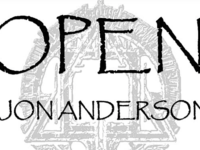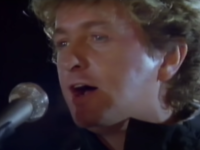When Yes’ “And You and I” arrived as a single on Feb. 1, 1972, it marked a major transition point for a band that’s become known for them.
The song, which opened Side 2 of Close to the Edge, was the lone single from Yes’ platinum-selling farewell album with original drummer Bill Bruford, was the last of four consecutive Top 50 Yes songs dating back to March of 1971, was Yes’ final such Billboard entry until “Owner of a Lonely Heart” shot to No. 1 more than a decade later.
“You listen to any band, and they go through highs and lows,” Jon Anderson told us, in an exclusive Something Else! Sitdown. “That was a serious high. It was music that had never been tried before.”
“And You and I” lives up to that kind of historical significance, too.
In fact, this remains an episodic wonder — beginning with the sound of Steve Howe tuning his guitar before moving through a series of movements highlighted by Rick Wakeman’s work on both Moog and Mellotron. This ebb and flow, which Howe has described as “fast and dangerous and somewhat ugly, and yet … really beautiful,” frames a composition of heady ambition.
“Eclipse,” the Sibelius-like second segment which provided content for the Yes single, opens the door — via a turn by Howe on a 12-string acoustic guitar — into a neo-Wagnerian “The Preacher, The Teacher” and then the concluding mantra of “Apocalypse,” which refers back lyrically to “Cord of Life.”
Thereafter, Yes rarely again achieved something so complete in both conception and execution. Really, few have. But Jon Anderson tells us the internet age might change that.
“It will be tried again, though, in the coming 10 or 20 years,” Anderson says. “People will expand their musical horizons, because they’re not being engaged by the radio or the record companies. That’s a thing of the past, in many ways.”
- How Deep Cuts on ‘Music From Big Pink’ Underscore the Band’s Triumph - July 31, 2023
- How ‘Islands’ Signaled the Sad End of the Band’s Five-Man Edition - March 15, 2022
- The Band’s ‘Christmas Must Be Tonight’ Remains an Unjustly Overlooked Holiday Classic - December 25, 2016



